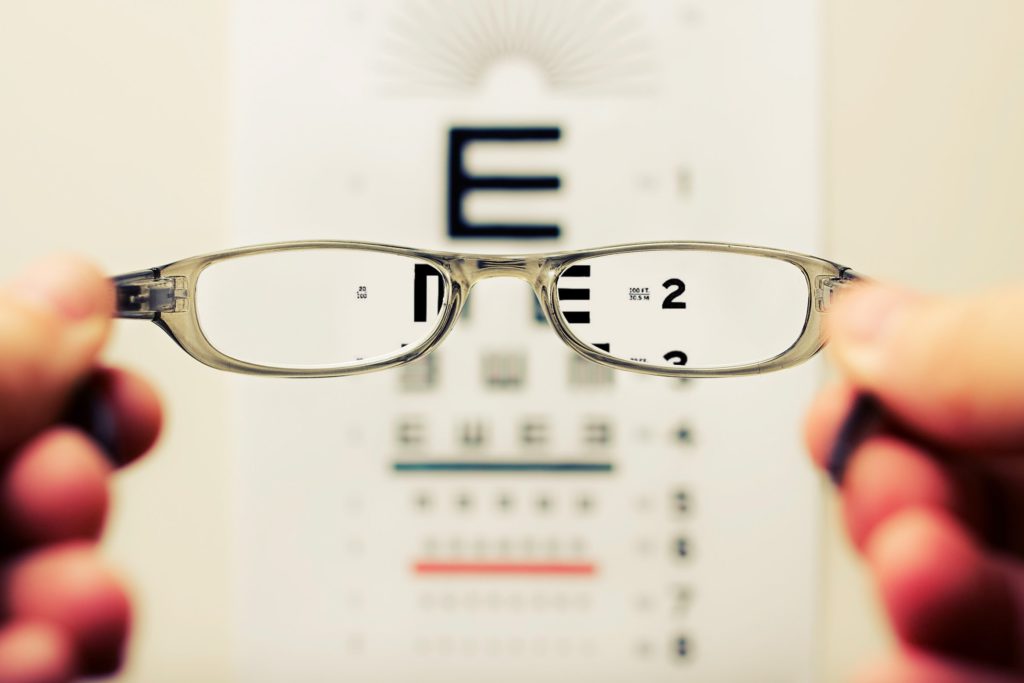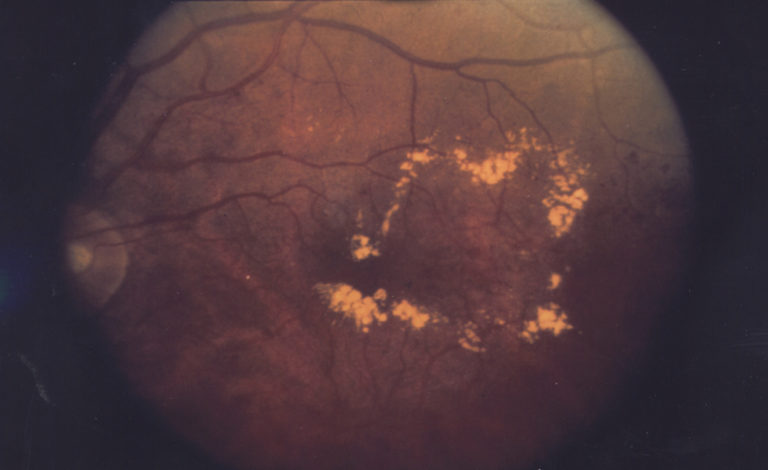What Is Gestational Diabetes And Does It Affect Your Eyesight?
During pregnancy, a number of changes occur in the body due to the alterations in the levels of certain hormones that keep fluctuating during different trimesters. These changes may put women at risk of certain complications including gestational disasters.
Gestational diabetes, just like type 1 and type 2 diabetes, is marked by a rise in blood sugar levels. Also, just like the other forms of diabetes, gestational diabetes also puts the patients at risk of complications including changes in their vision.
Here is a brief discussion about what gestational diabetes means and whether it can affect the eyesight of women.
What is gestational diabetes?
Gestational diabetes refers to a type of diabetes that is detected in women the first time during pregnancy. The diagnosis of gestational diabetes is made when the blood report of a pregnant woman shows a rise in the blood sugar level and when she does not have a history of diabetes before the current pregnancy.
Gestational diabetes is usually detected in the middle of or between the 24th and 28th weeks of pregnancy. Some women may develop gestational diabetes in one pregnancy while some develop it in more than one pregnancy. Gestational diabetes can sometimes be controlled by following healthy dietary habits and regular exercises.
However, there is a sharp rise in the incidence of severe forms of gestational diabetes in recent years. It has also been found that a larger than ever number of women with gestational diabetes now need active medical intervention for controlling their blood sugar levels. In some cases, they also need to take insulin with or without oral antidiabetic drugs in order to maintain their blood sugar levels within normal limits.
These trends point to the adverse impact of unhealthy eating habits and improper lifestyle factors on the health of women. Sedentary habits, obesity, metabolic disturbances, PCOS, and several other factors may contribute to the more severe form of gestational diabetes in pregnant women due to which they can have difficulties in maintaining normal blood sugar levels. This can also increase their need to use anti-diabetic drugs or insulin.
Moreover, the factors that contribute to the risk of gestational diabetes such as obesity can also play a role in causing symptoms linked to the eyesight by triggering inflammation.
It is important to understand the complex pathogenesis that makes women vulnerable to develop gestational diabetes and vision problems so that they are able to adopt healthier strategies to protect themselves against the potential risks.
Complications linked to gestational diabetes
The increase in the blood sugar level caused due to gestational diabetes may lead to serious complications for the pregnant woman as well as the baby as explained below:
Preeclampsia
The rise in blood pressure during pregnancy is often accompanied by other abnormalities such as the loss of proteins in the urine, and swelling in the hands and legs. These symptoms are together referred to as preeclampsia, a serious condition that needs to be monitored closely.
The incidence of preeclampsia is higher in women with gestational diabetes than in those without diabetes.
It is important to check the blood pressure of women with gestational diabetes on a regular basis to detect a rise in blood pressure. Women diagnosed with preeclampsia need to seek prompt treatment to prevent the further worsening of the condition that could put them at risk of preeclampsia.
High blood pressure caused due to gestational diabetes can result in immense harm to both the pregnant woman and the baby. It can increase the risk of premature birth, seizures, and stroke in the woman during labor.
Preeclampsia coexisting with gestational diabetes can also make them vulnerable to develop retinopathy and macular edema at a later stage.
An extra large baby
Poor control of gestational diabetes and persistently increased blood sugar levels may cause the baby to be “overfed” due to which he or she would grow large. The larger size of the baby can cause discomfort to the women, especially during the last trimester of pregnancy.
The increased growth of the baby may also lead to unfavorable consequences during delivery for the mother and the child.
The mother might require a C-Section (Cesarean-section) for the delivery and the baby may be born with neurological damage due to pressure exerted on the shoulders during delivery.

Cesarean Section
A C-section refers to a procedure performed for the delivery of the baby through the belly of the mother. Women who have gestational diabetes with poor glycemic control have a higher chance of needing a Cesarean section for the delivery of the baby.
Also, delivery by a C-section can make the woman take a longer time to recover from childbirth.
Hypoglycemia
Hypoglycemia is a common complication that may occur due to the improper management of gestational diabetes or the irregular dietary habits of the patient.
Patients who use anti-diabetic medications or insulin can develop hypoglycemia due to the use of a higher than required dose.
It is marked by an extreme decline in blood sugar level. The reduction in the blood sugar level below the normal limits can be extremely serious, and even fatal, if not detected and managed quickly.
Watching your blood sugar levels closely, taking your medications at proper times as prescribed, eating your meals at regular intervals, and treating low blood sugar levels early are some effective ways to reduce the risk of hypoglycemia.
The most common vision changes in pregnant women
- The hormonal, metabolic, and physical changes occurring in the body of a woman during pregnancy can also affect their eyes. If a woman has a pre-existing eye condition, like glaucoma, the intensity of the symptoms she experiences may become worse during pregnancy.
Hence, women are advised to inform their gynecologist and eye doctor of the symptoms they are experiencing and follow their instructions during pregnancy to avoid serious complications that may affect their eyesight further.
- The worsening of glaucoma during pregnancy may or may not be directly linked to gestational diabetes.
- A common condition affecting the eyesight that women may expect during pregnancy is the decrease in the production of tears. The reduced tear production can make the eyes dry and feel itchy. The symptoms may become worse in women who wear contact lenses.
The commonly prescribed medications for the treatment of reduced tear production are generally considered safe to use during pregnancy. Yet, it is important to consult your ophthalmologist before using any treatment or artificial tears. You can learn more about how to prevent diabetic blindness here.
- Pregnancy can also change the eyesight of women by making the eyes hypersensitive to light. Some women also experience recurring headaches or frequent attacks of migraines that are accompanied by the changes in vision and increased sensitivity to light.
One of the most effective ways to reduce these symptoms is to wear sunglasses having a mirror coating that reflects the sun’s glare and protects the eyes against the harsh UV rays.
- In some women, the changes in the eyesight during pregnancy could be linked to the edema or swelling of the retina or macula resulting in conditions such as diabetic retinopathy or macular edema.
These changes can be the result of gestational diabetes, especially if the woman has had a history of obesity. The swelling in the tissues of the eye usually occurs slowly over a period of years. Hence, it is unlikely for women to develop these conditions during the period of pregnancy itself.
However, gestational diabetes, if not controlled or managed properly, may persist even after the delivery of the baby, putting the women at risk of developing these complications at a later stage.
This marks the importance of monitoring your blood sugar levels throughout pregnancy and seeking appropriate treatment so that gestational diabetes can be detected at the earliest stage.
- Undergoing prompt and regular treatment for gestational diabetes can not just allow women to avoid the complications like miscarriage and preeclampsia during pregnancy but also help them avoid its long-term consequences like diabetic retinopathy and macular edema both of which could affect their eyesight severely.
- Another way pregnancy may change the eyesight of women is by making the vision blurry. This symptom is usually temporary. In most cases, the vision returns to normal once fluid retention is corrected or after giving birth.
Long-term vision changes linked to gestational diabetes
The majority of changes occurring in the eyesight during pregnancy as a result of gestational diabetes are mild. These changes are also temporary and tend to resolve over a period of time following the birth of the baby.
However, some symptoms may persist for longer even after childbirth. In some cases, the changes in the vision may continue to become worse if proper treatments to prevent damage to the retina, and macula due to the increased blood sugar level are not adopted.
Also, the occasional blurring of vision and increased light sensitivity in women with gestational diabetes can be the signs of preeclampsia.
If left untreated, both gestational diabetes and preeclampsia can create an adverse impact on the vision of the women resulting in the partial loss of vision that may progress to blindness, if left untreated.
Women may also experience other vision-related symptoms of high blood pressure and gestational diabetes such as seeing the “aura” of flashing lights.
Also, gestational diabetes, though a temporary form of diabetes, can cause damage to the blood vessels in the retina. The blurring of vision could be the initial warning sign of gestational diabetes affecting eyesight. As the pregnancy progresses, the risk of vision changes caused due to the rise in blood sugar levels and associated hormonal and metabolic disruptions can increase.
Hence, women with gestational diabetes and preeclampsia are advised to be watchful of the changes in their vision and consult an ophthalmologist at the earliest in case they experience blurring of vision or any other warning signs linked to their eyesight.
There is also a need to create more awareness about these subtle signs so that women are cautious about the impact of gestational diabetes on their eye health.
Let us move further to learn the various causes of blurring of vision that may occur during pregnancy and the right ways to manage them.
Blurring of vision during pregnancy
Pregnancy is known to change every aspect of the body’s functioning, sometimes uncomfortably. Hence, it is no surprise that it can produce an effect on the vision of women too.
It is not uncommon for women to discover they have a blurry vision during the second or third trimester of pregnancy. They also notice that their eyes are not as sharp as they used to be earlier as a result of which they develop a tendency to blink their eyes frequently to clear their vision.
The blurring of vision, though most commonly linked to gestational diabetes, may occur due to other causes. Some conditions that can cause the blurring of vision that may or may not be associated with gestational diabetes, include:

Reduced production of tears
Pregnancy hormones can reduce tear production, which can result in dryness, discomfort, and irritation in the eyes.
Increased eye pressure
The changes in the hormones during pregnancy can also cause a build-up of fluids in the eyes. This may lead to changes in the curvature of the eye, due to which your vision may be affected during pregnancy.
You may also develop a change in the thickness of the cornea, due to which your eyes would feel more sensitive.
Poor peripheral vision
Some pregnant women tend to have a reduced field of peripheral vision. The exact reason for the poor peripheral vision occurring during pregnancy is not known. Also, in most cases, the eyesight returns back to normal after the baby is born.
Management of gestational diabetes
Here you can find some excellent tips on how to help you avoid and even manage gestational diabetes. Remember to always consult with your doctor first to get the best treatment for you.
Changes in dietary habits
Eating healthy and nutritious foods is the key to minimize the risk of gestational diabetes. Women are also advised to check their blood sugar levels before planning a pregnancy. They should also try to lose excess weight, if they are obese, by making appropriate changes in their diet and exercising regularly before pregnancy in order to reduce their risk of gestational diabetes. This would also protect them against the vision changes and other complications associated with the same.
Exercise regularly
Regular exercises can help women keep their blood sugar levels in control before, during, and after pregnancy. It can also help to balance their food intake. Brisk walking and swimming are commonly recommended for women with gestational diabetes to help them improve glycemic control.
However, women are advised to consult their physician about the safe exercises that would be suitable for them during pregnancy.
Monitor blood sugar
As pregnancy can change the body’s needs for energy, women are likely to experience fluctuations in their blood sugar levels during different times of the day throughout pregnancy. Hence, it is advisable to check your blood sugar frequently.
Medications for gestational diabetes
Women with gestational diabetes may need to seek active medical intervention and use anti-hyperglycemic drugs or insulin to control their blood sugar levels within normal limits. They should use the medications as recommended by their physician in terms of their dosages and time for maintaining healthy blood sugar levels and preventing complications like hypoglycemia.

Post-pregnancy care
Gestational diabetes often resolves spontaneously after delivery. However, in some women, the rise in blood sugar levels may persist due to which women can develop type 2 diabetes.
Also, even if diabetes resolves after the birth of the baby, nearly 50% of women have a higher risk of developing type 2 diabetes later. Hence, getting tested for diabetes about 6 to 12 weeks after the baby is born and later, once in every 1 to 3 years, is highly recommended for assessing your glycemic control.
Women should also continue to exercise and adopt a healthy diet after pregnancy to delay or prevent the development of type 2 diabetes.
Regular eye check-ups
Routine visits to an ophthalmologist to assess the eyesight and the impact of gestational diabetes on the retina and macula are highly recommended. Women with gestational diabetes should undergo regular eye check-ups during and after pregnancy so that any abnormal changes can be detected at an earlier stage.
Conclusion
Gestational diabetes can affect the eyesight of women in numerous ways. It can also put them at risk of other serious complications like premature birth and preeclampsia. Moreover, other than diabetes, several other factors can contribute to the changes in the eyesight in pregnant women.
Hence, women should not ignore their eye health during pregnancy and be watchful of the signs linked to vision loss.









